Yes, you can transport an upright freezer on its side as long as you take the necessary precautions.
This includes ensuring that the appliance is securely fastened in place to prevent it from shifting and damage during transit. Additionally, if there are any removable shelves or drawers inside the freezer, they should be secured with tape to keep them in place while moving.
Be sure to leave the freezer door open for several hours after transporting it to allow air circulation before plugging it back in and turning it on. Following these steps will help ensure a successful move for your upright freezer.
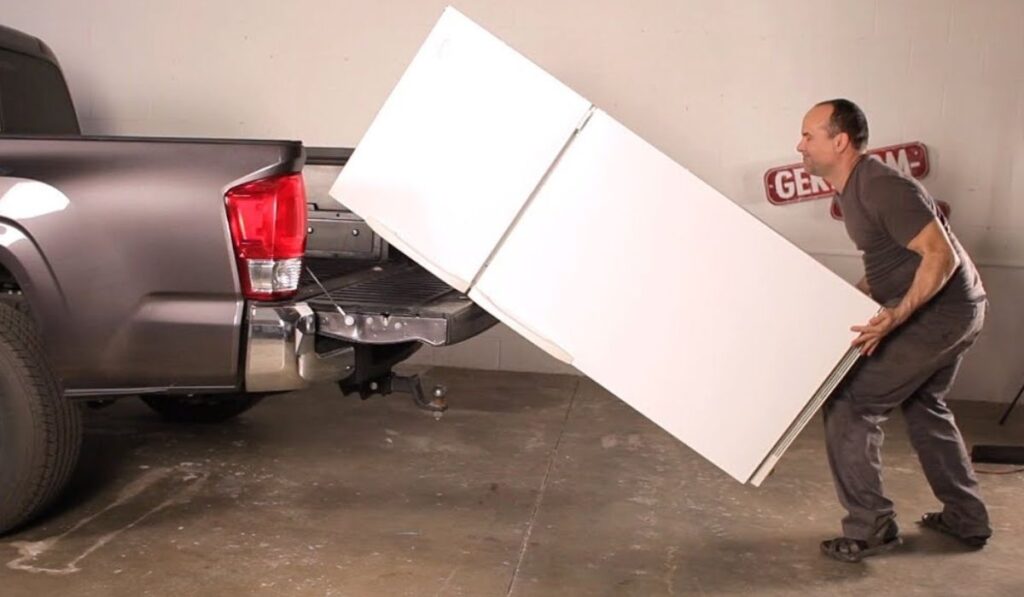
How Long Can a Freezer Lay on Its Side?
It is not recommended to lay a freezer on its side for longer than 24 hours. After this time, the oil contained in the compressor may migrate and cause damage to the unit. Additionally, after laying a freezer on its side it must be left upright for at least 24 hours before being plugged in and used again.
Doing so ensures there is no risk of damaging your appliance or voiding any warranties that may be attached to it.
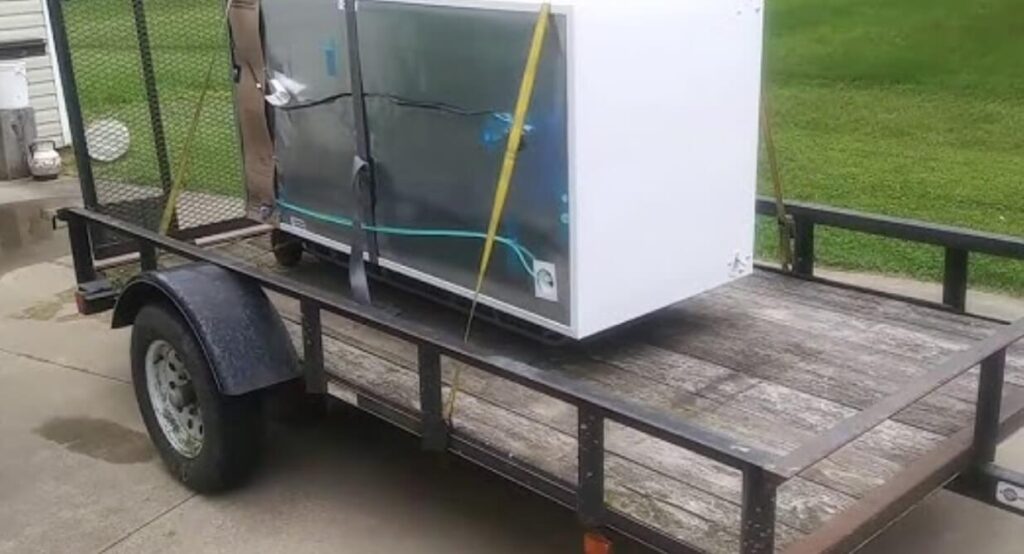
How long to leave a freezer after moving?
The recommended time to wait before plugging in and starting your freezer again is around 2 to 4 hours.
During this waiting period, you should also ensure that the freezer is kept in a stable and upright position. This helps prevent any potential damage to the cooling system and internal components. After the waiting period, you can plug the freezer back in, set it to your desired temperature settings, and allow it to cool down before placing your frozen items inside.
Keep in mind that these timeframes are general recommendations and can vary based on the specific make and model of your freezer.
What is the Compressor Side of a Freezer?
The compressor side of a freezer is the part that helps to keep your food cold. The compressor works by compressing and circulating refrigerant gas, which absorbs heat from inside the freezer and releases it out into the environment.
This creates a cooling effect, lowering the temperature of your frozen food items so they remain preserved for longer periods of time.

How to Transport an Upright Freezer?
Transporting an upright freezer can be a tricky task, but with the right preparation it can be done safely.
First, make sure that all of the contents are secured and properly packed. Securely tape down any loose shelves or drawers inside the unit to ensure they don’t shift during transport.
Move the freezer onto a dolly or sturdy cart with wheels if possible in order to easily maneuver it out of its current location. If not available, make sure you have several people helping you lift and move the appliance so that no one gets hurt or injures an arm or back in the process. Finally, secure your upright freezer into your vehicle using ropes and straps for extra support before driving away!
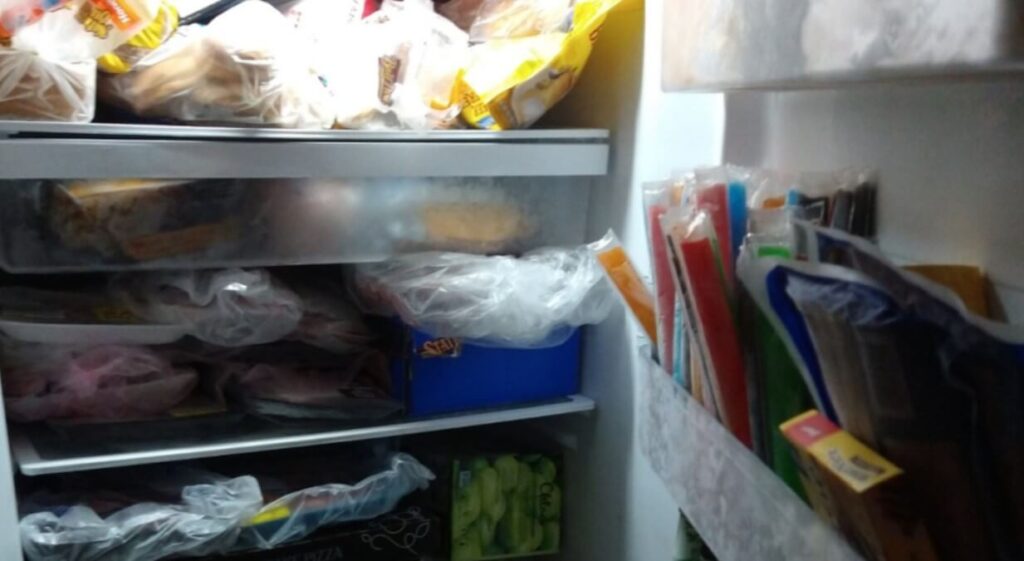
Can You Transport a New Freezer on Its Side ?
When transporting a new freezer, it is important to keep the appliance upright. Although many freezers are designed to be able to lay on their side for a short period of time, doing so can cause damage due to oil or coolant leaking out and impacting other components of the appliance.
To avoid potential damage during transportation, you should always ensure that your freezer is kept standing up straight in a vehicle with minimal jostling and movement.
How Long Can a Chest Freezer Lay on Its Side?
When moving a chest freezer, it is important to remember that you will need to wait at least 24 hours before plugging it back in once it has been laid on its side.
This allows the oil from the compressor to settle properly so that your appliance can function safely and efficiently when plugged in again.
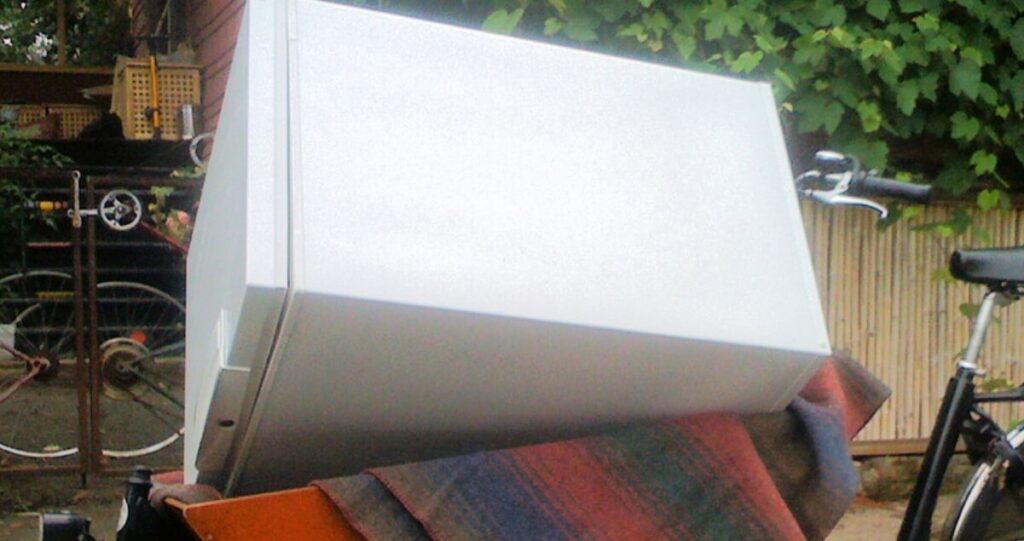
Moving a Freezer from One Room to Another
Moving a freezer from one room to another requires some preparation and careful handling to ensure its safety. Here’s a step-by-step guide to help you:
- Empty the freezer: Remove all food items and defrost the freezer if necessary. Clean the interior to prevent any spills or odors during transportation.
- Unplug the freezer: Disconnect the power cord from the electrical outlet and ensure that the freezer is completely powered off.
- Secure the contents: If there are any removable shelves or drawers inside the freezer, take them out and pack them separately. Secure the freezer door with tape or a strap to prevent it from opening during the move.
- Measure the doorways: Measure the freezer’s dimensions and compare them to the dimensions of the doorways, hallways, and staircases you’ll need to navigate during the move. Ensure that there is enough clearance for the freezer to pass through without damaging it or the surroundings.
- Enlist help: Freezers can be heavy and awkward to carry. It’s best to have at least one or two strong individuals to assist you with the move. Consider using lifting straps or a dolly to make the process easier and reduce the risk of injury.
- Protect the freezer: Wrap the freezer with blankets or moving pads to provide cushioning and protect it from scratches. Secure the padding with tape or straps.
- Lift and transport: Lift the freezer from the bottom, using your legs for support, and carefully carry it to the new room. Use caution when navigating corners, stairs, or narrow spaces. Avoid tilting the freezer excessively, as it can damage the compressor or cause oil leakage.
- Set up in the new room: Once you reach the new location, gently place the freezer in its desired spot. Remove any protective padding, reattach shelves or drawers, and ensure the freezer is level on the floor.
- Let it stabilize: Allow the freezer to sit upright and stabilize for a few hours before plugging it back in. This will allow any oil in the compressor to settle, preventing potential damage when powering it on.
- Plug in and test: Once the freezer has settled, plug it back into a suitable electrical outlet and ensure that it is functioning properly. Set the desired temperature and allow it to cool down before placing food back inside.
By following these steps, you can safely move your freezer from one room to another without causing damage to the appliance or yourself.
If you’re uncertain about any specific instructions or safety precautions, it’s always recommended to consult the user manual provided by the manufacturer or seek assistance from a professional.
What Happens When You Lay a Freezer on Its Side?
When you lay a freezer on its side, it can cause serious damage. Laying the freezer down puts strain on the internal components and hoses that are not designed to hold this pressure. This can lead to oil or refrigerant leaks, motor damage, compressor failure and other problems.
Additionally, if food is left in the unit during transport or when it’s laid down, items may shift inside and block cooling vents which could prevent proper air circulation and freeze up the coils.
Therefore it is important to empty out all contents before laying a freezer down onto its side.

Moving Freezer Short Distance
Moving a freezer, even just a short distance, can be tricky and time consuming. It is important to thoroughly clean and defrost the appliance before moving it so that it does not become damaged in transit. The freezer should then be securely strapped onto a dolly or other suitable transport device for the move.
If possible, the door of the freezer should remain open during transportation to allow air circulation which will help cool down any parts that may have become heated during cleaning or unpacking.
Finally, make sure to give your refrigerator plenty of time to settle once you’ve reached its new home before plugging it back in and turning it on again!
How to Transport a Freezer?
When transporting a freezer, it is important to take the necessary precautions to ensure that it arrives at its destination safely and securely.
First, make sure the freezer is empty of all food items and defrosted completely before attempting to move it. It’s also essential to secure the lid tightly with tape or straps so that it does not open during transport.
Additionally, you may want to cushion the freezer inside your vehicle with blankets or other padding materials for extra protection.
Finally, be sure to keep the temperature of your car cool when driving in order for your freezer contents not suffer any damage along the way!

Can You Lay an Upright Freezer down for Transport?
It is possible to lay an upright freezer down for transport, but it should be done carefully. First of all, you will need to empty the contents and make sure that all loose items are secured inside with tape or another securing method in order to prevent them from falling out during transit.
Once everything is secure, wrap the entire unit in plastic wrap or a moving blanket for protection against scratches and other damage during moving.
When laying it on its side, place something soft (like blankets) underneath both sides of the freezer so as not to scratch any surfaces when moving it around. Also be careful when lifting heavy objects such as freezers.
If you can’t lift safely by yourself then get help from someone else! Lastly, once your upright freezer has been laid flat, don’t forget to wait at least 24 hours before plugging it back in again so that compressor oil can return back into its natural position within the system before powering up again.
Is It Ok to Transport a Freezer Laying Down?
When it comes to transporting a freezer, the answer is generally no. It is not recommended that you transport a freezer while it is laying down. Freezers should always be transported in an upright position with all of their doors securely closed and latched.
This helps ensure that cold air does not escape from the freezer and prevents damage to any internal components. Additionally, if a freezer has been laid down for an extended period of time during transportation, it may take longer for the appliance to reach its optimal temperature once plugged back in due to increased thermal stress on its components.
For these reasons, when you are transporting your freezer make sure you keep it upright at all times and secure its doors tightly shut!
What is the Compressor Side of an Upright Freezer?
The compressor side of an upright freezer is a critical component that helps regulate the temperature inside the appliance. It works by taking in warm air and compressing it to create cold air inside the unit.
The compressor also pumps coolant through coils located on the back or sides of the unit, which absorb heat from within its cavity, helping to keep food at optimal temperatures for storage.
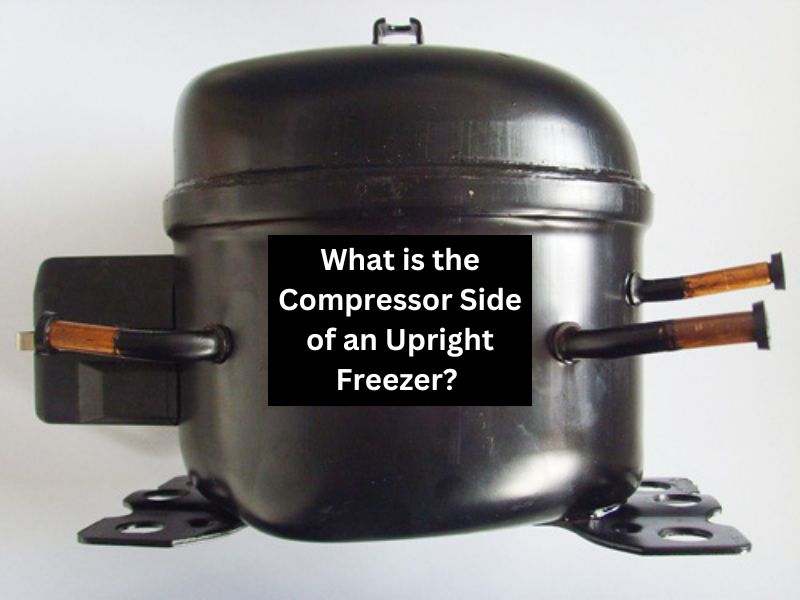
The compressor can be found either on top or bottom of most upright freezers, depending on their design; however, it’s typically located towards the back of the appliance where it’s less likely to come into contact with other components (such as shelves). Inside this essential part lies several important components including a fan motor, condenser coil and evaporator core.
All working together to maintain your freezer’s cooling system. Without proper maintenance and care for these integral pieces of machinery, you could risk losing food due to spoilage and malfunctioning parts over time.
Proper upkeep includes regular cleaning around this area (as dirt buildup can severely reduce efficiency) as well as checking frequently for any signs of wear-and-tear such as leaking fluids or loose connections.
Can You Transport A Freezer On Its Side?
It is generally not recommended to transport a freezer on its side. Transporting a freezer on its side can potentially cause damage to the compressor and cooling system. The refrigerant inside the freezer’s compressor is designed to flow in a specific direction, and laying the freezer on its side can lead to oil pooling in the wrong areas, affecting its cooling performance.
If you must transport a freezer, it’s best to keep it upright or follow the manufacturer’s guidelines for safe transportation.
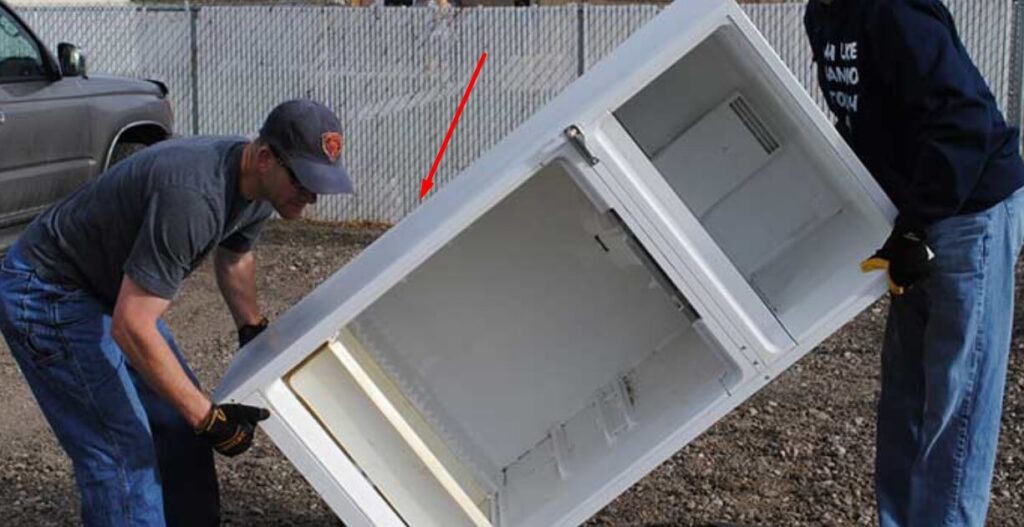
How Long Should a Freezer Sit After Moving?
When moving your freezer, it’s important to give it time to settle in the new location before turning it back on. Generally speaking, you should allow your freezer at least 24 hours of rest after being moved so that the oil and refrigerant gas can settle within the system. This will ensure optimal cooling performance once you turn it back on again.
Additionally, allowing your freezer time after a move is also important for safety reasons; if turned on too soon, you may end up with some unexpected malfunctions or even an appliance fire hazard due to incorrect wiring connections or air leaks.
So be sure to take all necessary precautions when moving your freezer and keep in mind that 24 hours of rest is typically recommended before plugging it back in!
Can you lay a refrigerator on its side for 30 minutes?
While it’s generally not recommended to lay a refrigerator on its side, if you need to do so for a very short period of time, such as 30 minutes, it’s unlikely to cause significant harm. However, there are a few important considerations to keep in mind:
Minimal Angle: If you need to lay the refrigerator on its side, try to keep the angle as minimal as possible. This can help prevent the compressor oil from flowing into the refrigerant lines and minimize the risk of damage.
Protective Measures: If possible, secure the refrigerator in a way that prevents it from tipping or shifting during the 30 minutes. This can help minimize any potential jostling or movement that could affect internal components.
Return to Upright Position: After the 30-minute period, it’s important to carefully return the refrigerator to an upright position. This allows any displaced fluids to settle back into their proper places.
Waiting Period: Even after returning the refrigerator to an upright position, it’s still a good idea to let it stand undisturbed for a few hours before plugging it back in. This gives the fluids time to settle completely.
Can you lay a upright freezer down to transport it?
Absolutely, laying down an upright freezer for transportation is completely fine. In fact, it might even be a more practical way to move it, ensuring a stable and secure transport. Feel free to go ahead with that method.
Conclusion
In conclusion, it is possible to transport an upright freezer on its side. However, this should only be done when absolutely necessary and with the proper precautions taken to ensure safety. Upright freezers may come equipped with anti-tilt brackets which can help minimize movement during transit.
Additionally, it is important that you secure the appliance properly in a large vehicle before moving it so that nothing shifts or falls over. With careful planning and preparation, safely transporting an upright freezer on its side can be achieved without any issues.
